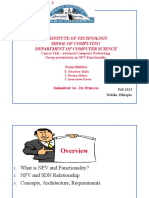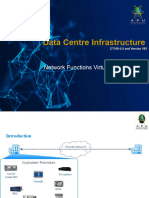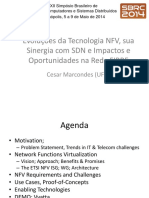0% found this document useful (0 votes)
52 views7 pagesPresentation
The document discusses network functions virtualization (NFV) including defining NFV, explaining the differences between Type 1 and Type 2 hypervisors, and listing NFV requirements and benefits. It also covers related topics such as virtual machines, container virtualization, and NFV standards.
Uploaded by
mihipa8592Copyright
© © All Rights Reserved
We take content rights seriously. If you suspect this is your content, claim it here.
Available Formats
Download as DOCX, PDF, TXT or read online on Scribd
0% found this document useful (0 votes)
52 views7 pagesPresentation
The document discusses network functions virtualization (NFV) including defining NFV, explaining the differences between Type 1 and Type 2 hypervisors, and listing NFV requirements and benefits. It also covers related topics such as virtual machines, container virtualization, and NFV standards.
Uploaded by
mihipa8592Copyright
© © All Rights Reserved
We take content rights seriously. If you suspect this is your content, claim it here.
Available Formats
Download as DOCX, PDF, TXT or read online on Scribd
/ 7

























































